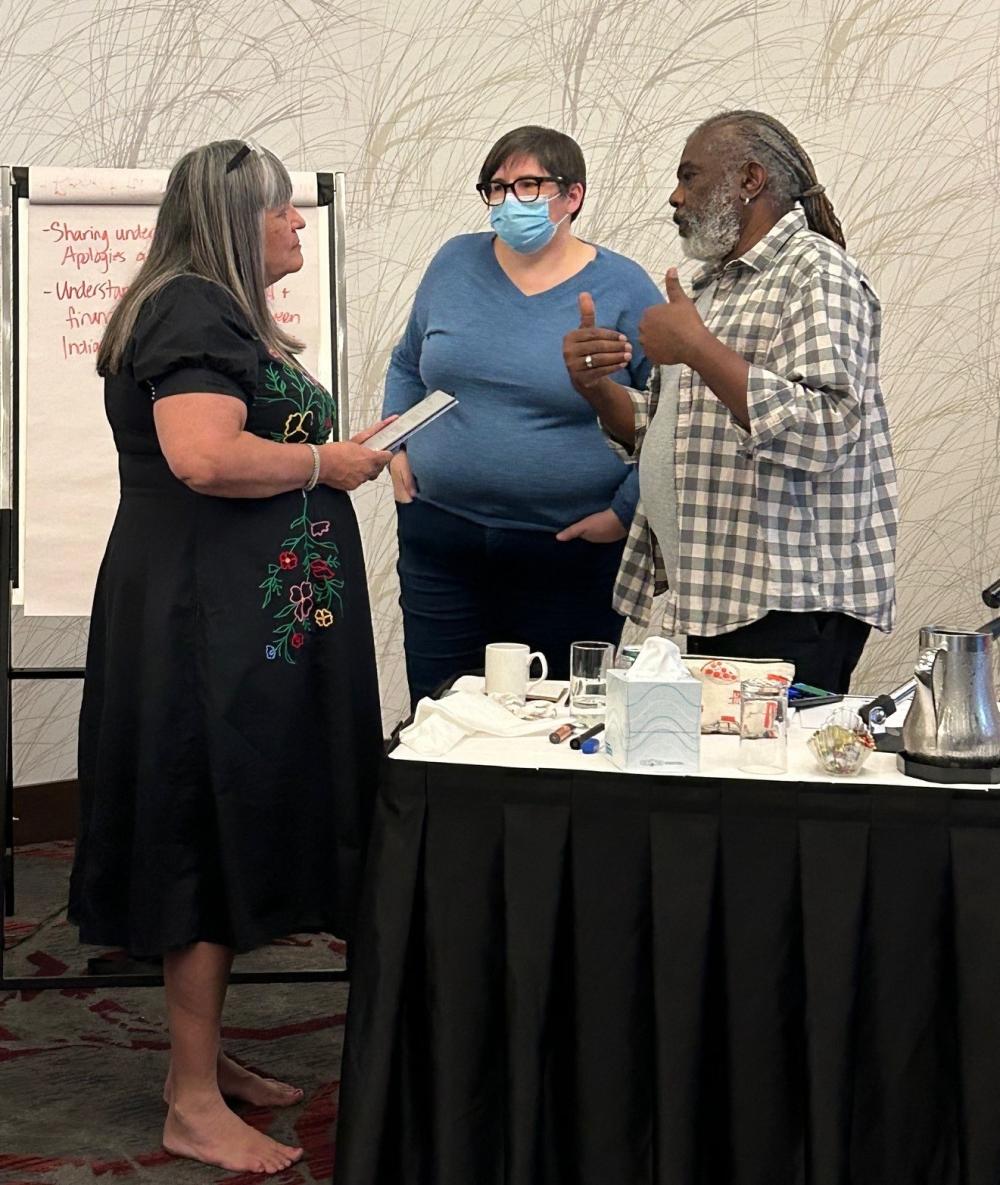
FAQs about Remit 1: Creating an Autonomous National Indigenous Organization
For full context of the Remit, please see post on Responding to Questions About Remit 1: Creating an Autonomous Indigenous Organization. A new video answering your questions about the remit has been added in a new post.
Q: Does the Indigenous church really want to separate from the United Church?
No. The Indigenous Church does not want to separate. Remembering the long history of Indigenous and non-Indigenous relationship in the United Church, the National Indigenous Council, in its proposal to General Council 44, said:
It is time for us to move towards a different relationship. It is time to set aside the notion of “missions to the Indians” and truly move towards being “partners in God’s call to all the earth.”
This means a change in structure for The United Church of Canada. The Haudenosaunee speak of the Two-Row Wampum. This covenant speaks of our two peoples traveling down a river, each in their own canoe. With respect, we need to allow one another to simply be who we are. It is time to remember this covenant and work as two bodies, side by side – the United Church with all its complexity, the National Indigenous Circle with similar complexity. Together we will support each other’s journey.
The Indigenous Church wants to paddle down the river beside the non-Indigenous church — as it should have been able to from the very beginning.
This means that both parts of the church – the Indigenous Church and the non-Indigenous church – will continue to be in relationship with one another. Another way of naming it is that they will continue together on two parallel paths.
Q: What does the proposed structure look like?
At this point, there is no proposed structure. The specific structure will be worked out if the remit passes, and the Indigenous church begins its work. This dynamic is not unlike the situation as the church moved from a four-court model to three courts. At that time, we knew the parameters of what the new structure would look like in terms of having regional councils rather than presbyteries and conferences, but we did not know the details of what each regional council might look like. That was worked out over time, with a number of commissions created to help the process. Similarly, the structure of the autonomous National Indigenous Organization would be worked out over time.
As the Indigenous Church’s proposal to General Council 44 notes, this will include ongoing conversation with the General Council, and a report back to General Council 45 on the state of the dialogue and required next stages of engagement.
The Indigenous Church wants space to figure things out for themselves – and not for the non-Indigenous church to tell them what to do. The Indigenous Church does not yet have all the answers for what the structure will look like. But they want the time and space to do this work on their own, while being in relationship with the rest of the church.
Q: What are the financial implications if the remit passes?
An Indigenous Church has existed within, and been funded as part of, The United Church of Canada for many years. This has included communities of faith as well as staff at the Conference (former All-Native Circle Conference and BC Native Ministries) and General Council Office (the Indigenous Ministries and Justice unit). As the Indigenous Church continues to be a part of the United Church, that will continue within the context of addressing declining revenue overall.
On the related question of annual assessments, most Indigenous churches have not historically been assessed because there were such limited local resources, but this may be revisited as part of an overall review of assessment.
Q: Will the Indigenous Church still accept United Church policy?
Policies outlined in The Manual apply to all bodies of the United Church, including the Indigenous Church. In areas of social policy, the hope is that, moving forward, the Indigenous and non-Indigenous churches will work together to “co-develop” policy positions.
Q: Will the Indigenous Church practice United Church theology?
The United Church of Canada has a broad theological spectrum. Not all people in the United Church share the same theological positions. However, we do share a commitment to scripture as foundational, and to our doctrine and theologies as expressed in our statements of faith: the Twenty Articles of Doctrine (1925); A Statement of Faith (1940); A New Creed (1968); and A Song of Faith (2006). This includes the Indigenous Church, and the remit does not change that.
The Caretakers of Our Indigenous Circle, in their foundational document Calls to the Church, say that Indigenous Peoples will continue to practice their own spirituality alongside the teachings of Jesus. Respecting Indigenous spirituality is a part of healing or reconciliation for the church.
Q: Are we forcing something on the Indigenous Church that they are not capable of handling?
First, this question assumes that Indigenous peoples are not capable of making decisions and governing. This is a racist assumption and must be refuted.
Secondly, this change is the expressed wish of the Indigenous Church. The remit supports a proposal that comes entirely from the Indigenous Church. In 2015, when the church confirmed its move from a four-court to a three-court model (of the denominational council, the regional councils, and communities of faith), the Indigenous Church made clear that it had not been fully included in the whole of the process. They noted that the result still caused them to lose relationships with Conferences, and to lose the All-Native Circle Conference and its presbyteries. It called for more time to determine its vision of the future, which it did in the Calls to the Church, accepted in 2018. The proposal at hand is the direct product of the structures and processes put in place by that prophetic document.
Where can I find additional background information about the remit?
For additional information about the remit, please refer to: https://generalcouncil44.ca/council/remit-1-establishing-autonomous-national-indigenous-organization.
